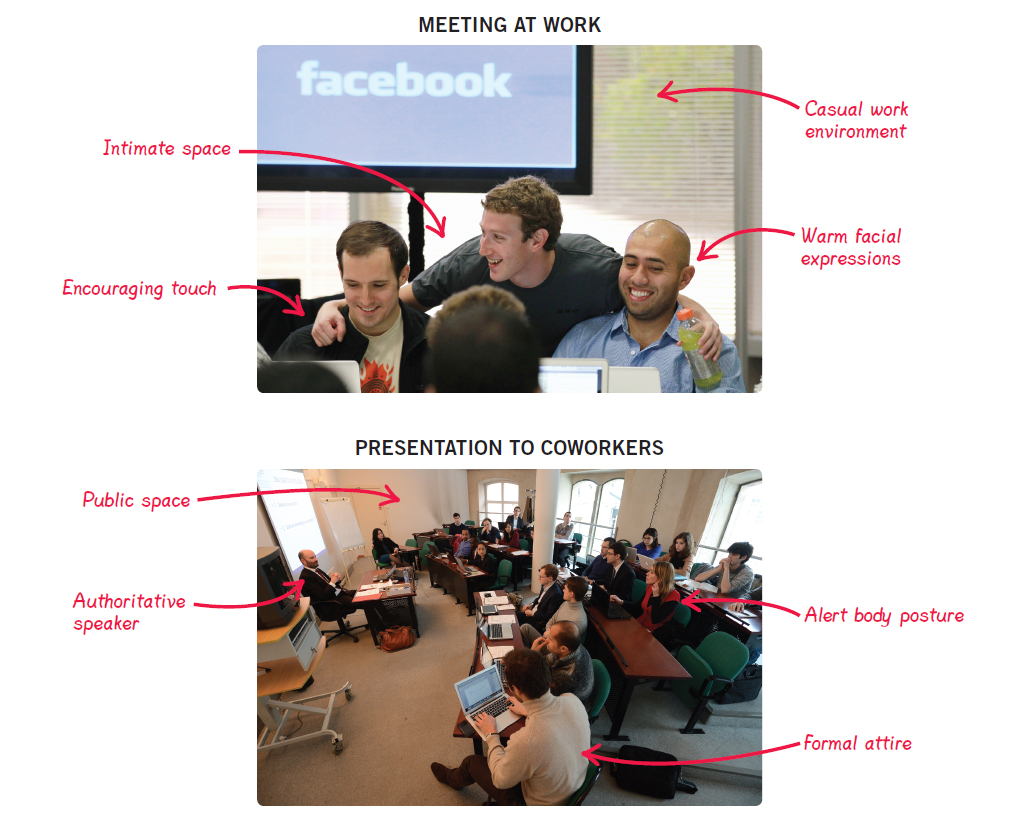Beliefs about Time
Time seems like a constant—something that exists outside of you and that everyone views in exactly the same way as you do. But as noted in Chapter 4, people around the globe differ in their beliefs about time (E.T. Hall, 1981, 1983, 1997b). Those who have an M-time orientation (for “monochronic time”) value careful scheduling and time management. They view time as a precious resource: it can be saved, spent, wasted, lost, or made up; it can even run out. People who have a P-time orientation (“polychronic time”) value interpersonal interaction and don’t view time as a resource to be spent, saved, or guarded.
NONVERBAL COMMUNICATION IN CONTEXT

How you perceive, orient to, and structure your time communicates powerful nonverbal messages to others. If you show up substantially late to a lunch with an M-time friend, for example, you communicate “lack of caring.” In contrast, being 10minutes early for a lunch date might convey being “uptight” or “rigid” to a P-time friend. Similarly, if you opt to spend time with your family in the morning—making you an hour late for your work shift—an M-time boss will likely view this as being irresponsible. You might even get fired. A P-time boss, on the other hand, will likely view you as having the right priorities in life. To improve your own competence, keep time orientation differences in mind and be willing to flexibly adapt your behaviors to others as needed.